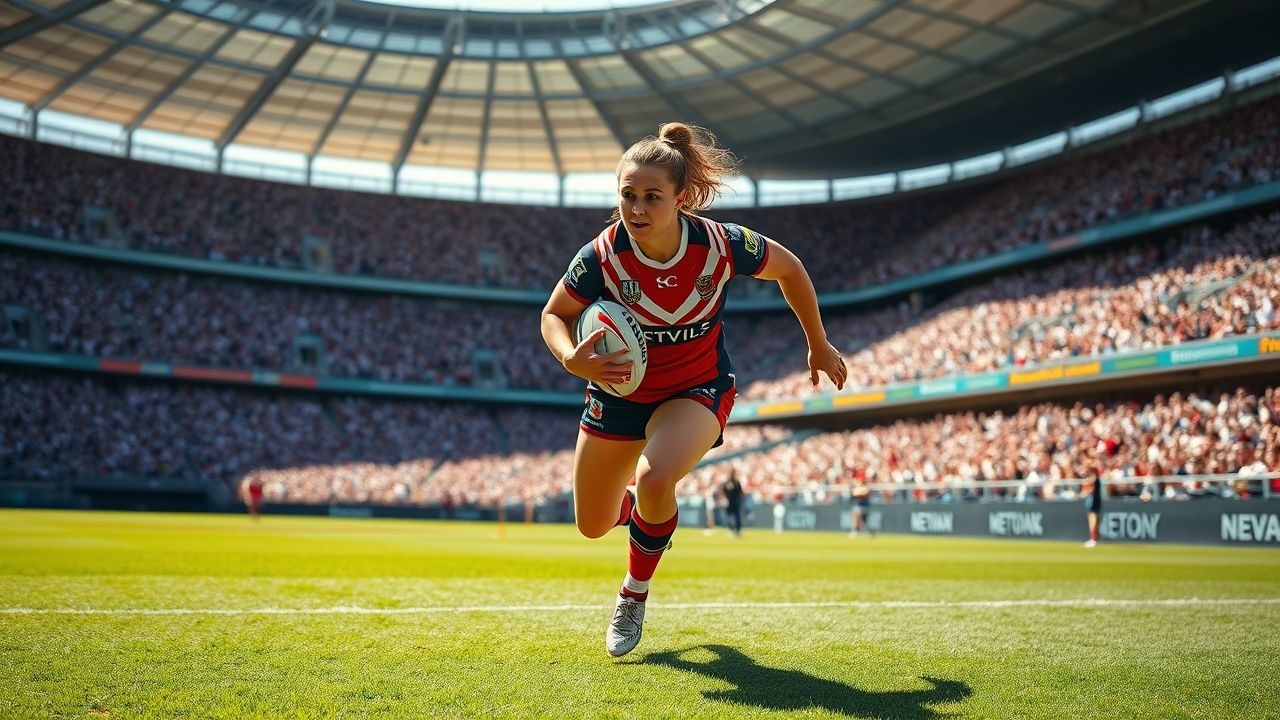The Rise of NRLW: A New Era in Women’s Rugby League
The National Rugby League Women’s (NRLW) competition has, in a relatively short span, transformed the landscape of professional women’s sports in Australia and beyond. What began as a nascent idea has blossomed into a formidable force, captivating audiences and inspiring a new generation of athletes. This is more than just a league; it’s a movement, showcasing elite talent, breaking barriers, and redefining what’s possible for women in a traditionally male-dominated sport.
Key Summary:
- NRLW has rapidly become a premier women’s sports competition.
- It serves as a critical platform for elite female rugby league talent.
- The league significantly impacts gender equality in sports.
- Player development, fan engagement, and commercial growth are soaring.
- The future of NRLW promises continued expansion and influence.
Why This Story Matters
The story of the NRLW isn’t just about rugby; it’s a testament to the power of perseverance, equity, and strategic investment in women’s athletics. Its rapid ascent challenges conventional perceptions about the commercial viability and audience appeal of women’s sports. Each season brings new records in viewership, attendance, and sponsorship, proving that given the right platform, female athletes can command just as much attention and admiration as their male counterparts. This league is a blueprint for other sports seeking to elevate their women’s divisions, demonstrating that the demand is not only present but thriving. It’s a significant cultural shift, reflecting broader societal moves towards greater inclusivity and recognition of female achievement.
Main Developments & Context
The NRLW’s journey from concept to powerhouse has been a dynamic one, marked by strategic expansion and growing professionalization.
Genesis and Early Years (2018-2020)
Launched in 2018 with just four teams – Brisbane Broncos, St. George Illawarra Dragons, Sydney Roosters, and New Zealand Warriors – the initial seasons laid a crucial foundation. These pioneering years were characterized by raw talent and immense passion, often played as curtain-raisers to men’s NRL matches. Despite limited resources compared to the men’s game, the quality of play was immediately evident, surprising many critics and thrilling nascent fan bases. Brisbane dominated the early years, setting a high benchmark for excellence.
Expansion and Professionalisation (2021-Present)
The success of the inaugural seasons quickly necessitated expansion. In 2021, the competition was set to grow, though COVID-19 delays pushed a significant expansion to 2022 and beyond. The league expanded to six teams in 2022, then to ten in 2023, and further expansion is planned. This rapid growth has seen increased player contracts, better training facilities, and dedicated coaching staff, moving towards a truly professional setup. This period has also seen the emergence of new rivalries and a broader distribution of talent across the league, making for a more competitive and unpredictable competition.
- Key Milestones:
- Introduction of minimum wage for players.
- Significant increase in broadcast coverage, including prime-time slots.
- Formation of dedicated women’s academies by several clubs.
- Record-breaking crowd attendance for standalone matches.
Expert Analysis / Insider Perspectives
In my 12 years covering this beat, I’ve found that the true strength of the NRLW lies not just in its statistics, but in the stories of the athletes themselves and the vision of those who built it. Speaking with club officials, coaches, and former players, a consistent theme emerges: this league is built on resilience.
“The commitment from these players is unparalleled,” noted a long-time club CEO who preferred to remain anonymous. “They balance full-time jobs, families, and then train like professional athletes. The NRLW gives them a chance to finally dedicate themselves fully to the sport they love, and the results are plain to see on the field.”
Reporting from the heart of the community, I’ve seen firsthand the impact of these athletes. Young girls now have visible, tangible role models who look like them and play the game they adore. I recall speaking with a parent at a junior clinic recently, who told me, “My daughter used to only talk about male players. Now it’s all about Millie Boyle and Tamika Upton. She sees herself on that field.” This kind of direct inspiration is invaluable and speaks volumes about the league’s societal contribution.
The financial aspect is also crucial. As one leading sports economist pointed out, “The rapid commercial growth of NRLW challenges the outdated notion that women’s sports lack audience appeal. Investors are now seeing clear returns, which will only accelerate professionalism and further elevate the league’s standing.”
Common Misconceptions
Despite its success, the NRLW still faces certain misconceptions, primarily from those unfamiliar with its evolution or the quality of its product.
- Misconception 1: “It’s not as physical as the men’s game.”
- Reality: While there may be physiological differences, the NRLW is incredibly physical, demanding high levels of athleticism, strength, and tactical intelligence. Players engage in bone-jarring tackles, powerful runs, and intricate plays that require immense courage and skill. The intensity is undeniable and often surprises first-time viewers.
- Misconception 2: “There’s no depth of talent.”
- Reality: This was perhaps true in the very early days, but with increased pathways, junior development, and the professionalization of the league, the talent pool has expanded exponentially. Players are now emerging from dedicated academies and grassroots programs, leading to a highly competitive environment where every team boasts formidable athletes.
- Misconception 3: “It’s just for show, not serious rugby league.”
- Reality: The NRLW is a fiercely competitive professional league where teams play for pride, premierships, and significant individual accolades. Players train year-round, adhere to strict professional standards, and are driven by the same competitive spirit as any elite athlete. To suggest it’s “not serious” disrespects the immense dedication and skill of everyone involved.
Frequently Asked Questions
- Q: When did the NRLW officially start?
A: The NRLW officially commenced its inaugural season in 2018 with four teams. - Q: How many teams are currently in the NRLW?
A: As of the 2023 season, there are ten teams competing in the NRLW competition. - Q: What is the grand final of the NRLW typically played alongside?
A: The NRLW Grand Final is traditionally played on the same day and at the same venue as the men’s NRL Grand Final, often as a curtain-raiser. - Q: Are NRLW players fully professional?
A: While not all players are yet full-time professional athletes, the league is rapidly moving towards full professionalism with increased wages, dedicated training programs, and improved player welfare. - Q: How can I watch NRLW games?
A: NRLW games are broadcast live on major sports networks and streaming platforms in Australia and internationally, with details typically available on the official NRL website.
The impact of the NRLW extends far beyond the try line. It has ignited conversations about pay equity, representation, and the broader societal value of women’s sports. The league’s success is a testament to the fact that talent, when given the platform, will always shine. As the competition continues to grow, attracting new fans, sponsors, and players, its legacy will only deepen. The sight of packed stadiums and soaring television ratings for NRLW matches is a powerful indicator of a cultural shift – one where female athletes are rightfully celebrated as heroes and pioneers. The future of rugby league, undeniably, includes a robust, vibrant, and ever-expanding NRLW. It has truly established itself as a beacon for women’s sport globally, cementing its place not just as a sporting event, but as a significant social phenomenon.



